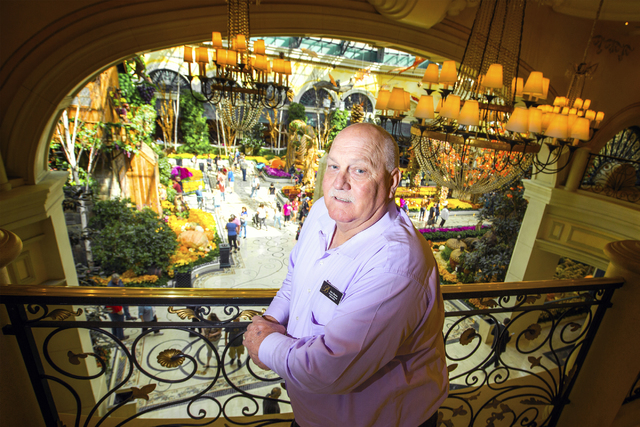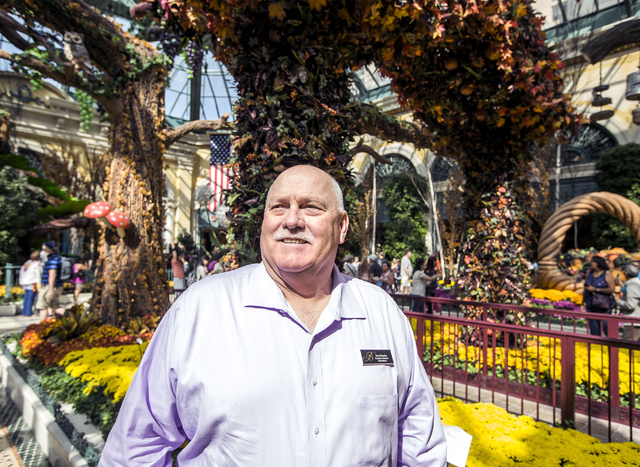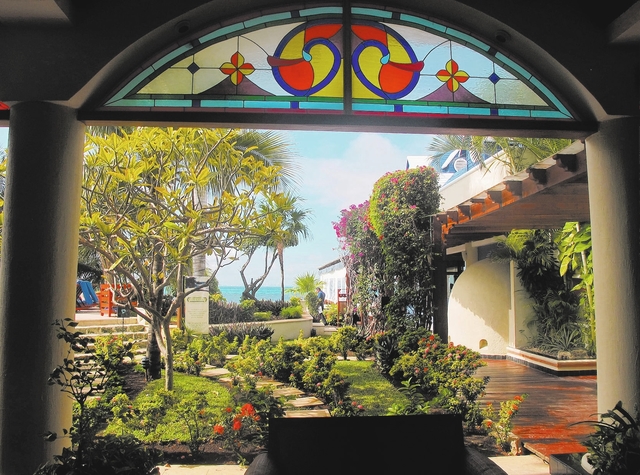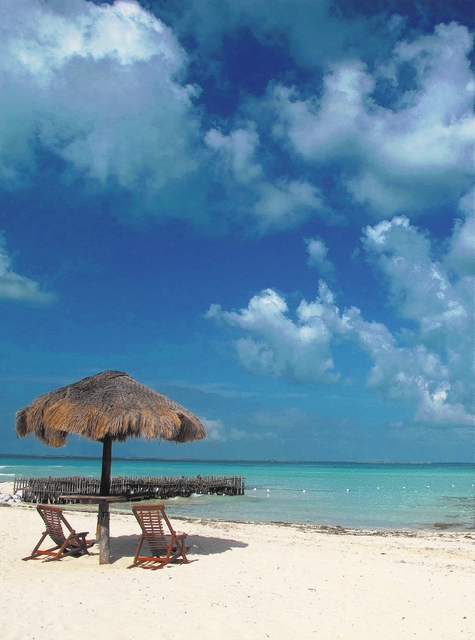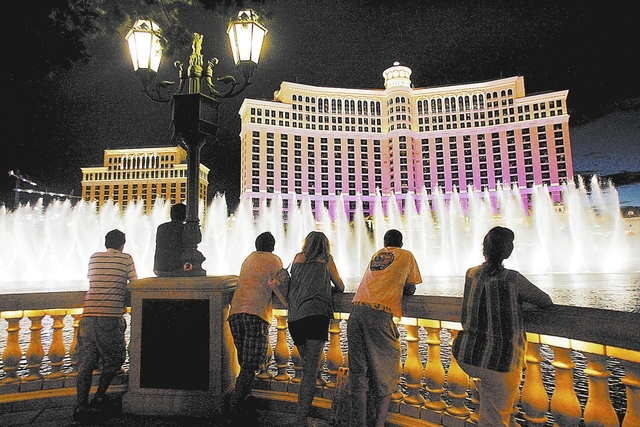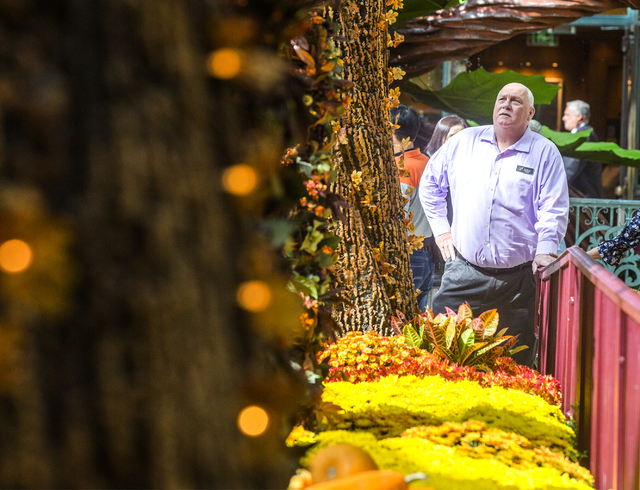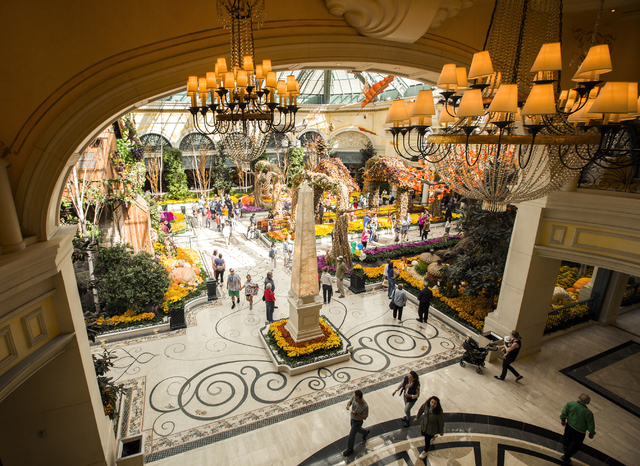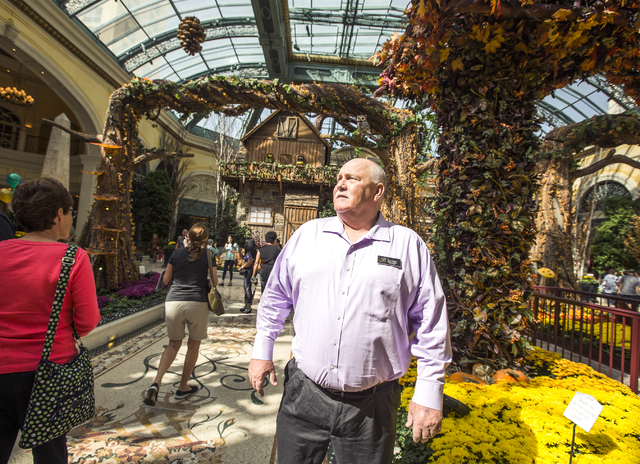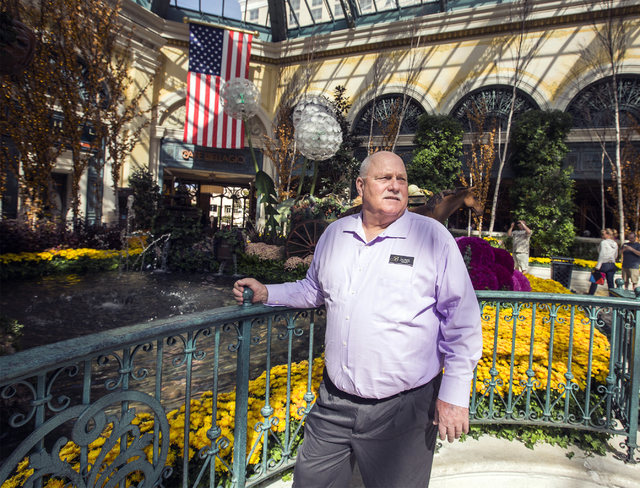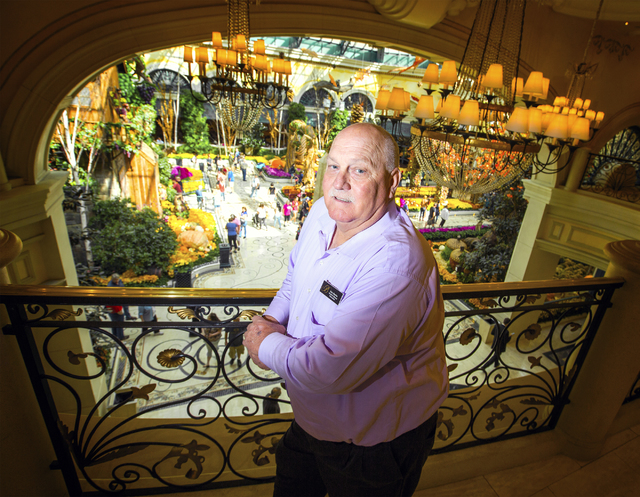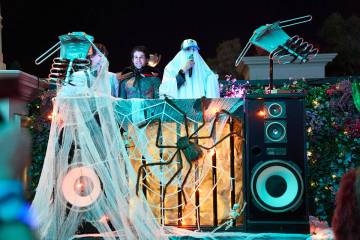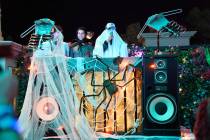Bellagio Conservatory helps visitors fall into new season
Vegas Voices is a weekly question-and-answer series featuring notable Las Vegans.
By definition, deserts don’t experience fall in the traditional sense. Sure, there’s the smattering of pumpkin patches around the Las Vegas Valley. The aspen leaves that light up Mount Charleston. And there’s certainly nothing stopping you from consuming pumpkin in latte, ice cream, bread and pie forms. But full-on fall immersion can only be found indoors in Las Vegas at the Bellagio Conservatory’s Autumn Harvest display.
Jerry Bowlen, executive director of horticulture for MGM Resorts, oversees the creation of the Conservatory displays from design to deconstruction. This year, that included the placement of 45,000 flowers, the return of the 28-foot-tall talking tree and the addition of a Napa chateau theme.
We caught up with him at the Conservatory’s autumn display, which will be open until Nov. 25, to talk about how this year’s installation came together.
Review-Journal: What’s the process for designing the Conservatory display for each season?
Bowlen: Well, we sit down, and it’s usually we’re three to five months ahead of it. Right now we’ve already designed holiday, and we’re in the middle of designing Chinese New Year’s. What we do is we take the concept we want to come out with for the show, sit down, round-table it, come up with the props we already have, and new prop ideas, and start proceeding with the new ideas into construction of the props. So we do renderings … they’re lifelike renderings and we sit down and go over it and then present it to our operating committee and get a buy-off on them and then we start production: build the props, get them ready for the dates of the show.
R-J: How much of the conservatory display is artificial and how much is live plants?
Bowlen: Most of the large props are artificial, and then the rest is all live. We try to keep the botanical aspect to it, so all our large pumpkin patches are live, even the large 1,200-pound pumpkins are real pumpkins.
R-J: How much of the fall display returns every year?
Bowlen: What we try to do is, every show, implement two to three new props per show. So sometimes we enhance the existing props we have. Last year, we only had the vintage timbers, which had no archways, so this year, we actually brought in new archways. We actually had some new acrylic leaves made. All of this is new, as far as the grape-leaf waterfall, all the hanging element above. This is our old watermill, which we just took the water wheel part of it off and created the Napa chateau.
R-J: What kind of upkeep is required to ensure every flower looks fresh for the entire two months of the display?
Bowlen: We maintain them every day, which is watering and fertilizing. At the same time, the topiaries get changed out on a daily basis. Basically, we go in and take any of the flowers that are wilting, pull them out and put new ones in. The other plants, depending on the type of plant, they’ll last anywhere from two to three weeks, not that they die or anything, but the density of the flowers are not as dense as we want them. After two to three weeks we come in and we’ll take out the whole variety of plant and then bring in new plants and put those in. And then we recycle all the plant material. We send it out in green waste and it gets turned into mulch.
R-J: What are the challenges of landscape design in a desert? We don’t have a whole lot of water or natural growth out here.
Bowlen: I can tell you that design criteria is something that we take very seriously. Last year here at the Bellagio we actually removed, I think, 25,000 square feet of turf with an estimated water savings of close to 13 million gallons. The crown jewel of our landscape, xeriscape, right now is The Park and (T-Mobile) arena. We worked extensively with the Southern Nevada Water Authority and put together a plant palette that was desert plant material, including the trees and the plants, and the irrigation system is a drip irrigation system that produces water by the hour instead of by the minute. And then at the same time it’s direct feed right to the plant and not the whole surface area of the plant. The Park and the arena are our crown jewel as far as our xeriscape and a lot of our future properties will be designed around that here in Las Vegas.
R-J: Anything else we should know about the Conservatory?
Bowlen: I would just say that when people come to Las Vegas, the word on the street is, you have to come by the Conservatory to the Bellagio, and we live up to that standard every day. It’s free to our guests and they appreciate it and we appreciate them coming.
Read more from Sarah Corsa at reviewjournal.com. Contact her at scorsa@reviewjournal.com and follow @sarahcorsa on Twitter.
Getting to know: Jerry Bowlen
Favorite vacation destination? Cancun, Mexico, and a staycation at Mandalay Bay.
Where's the first place you like to bring visitors in Vegas? Bellagio Conservatory and Fountain show, of course.
Favorite pizza topping? Pepperoni
Guilty pleasure of the moment? Classic Rock. I love to jam out while I'm driving.
What's something you never leave the house without? My cellphone — work and family are 24/7.



